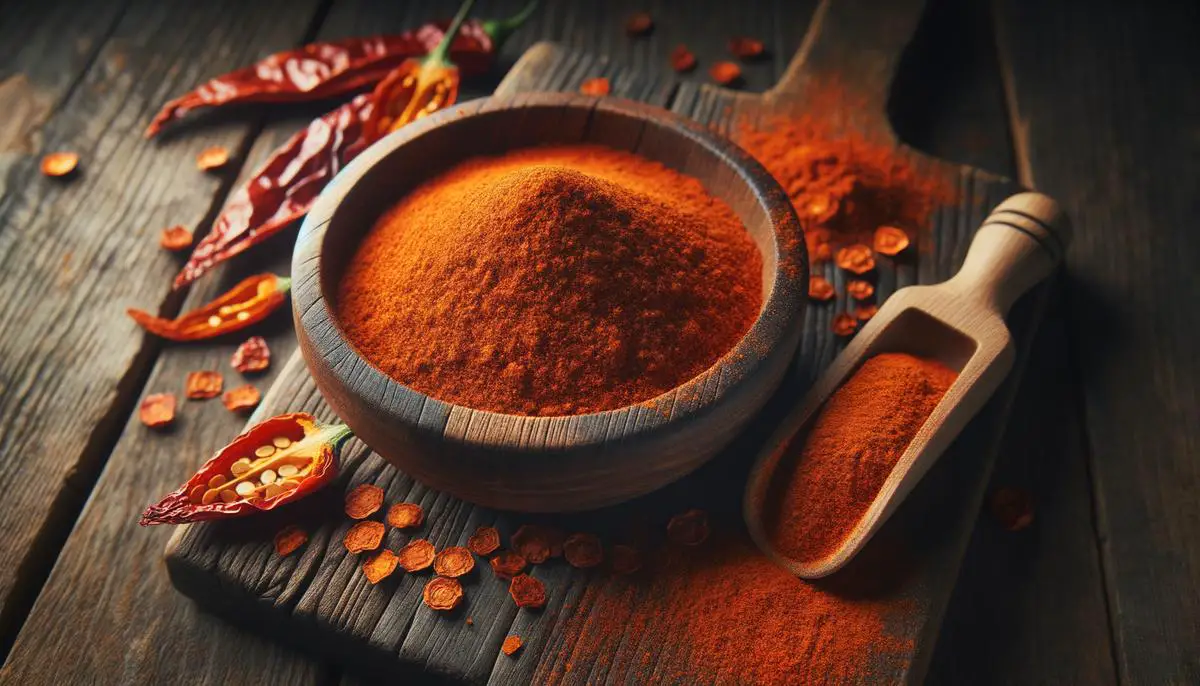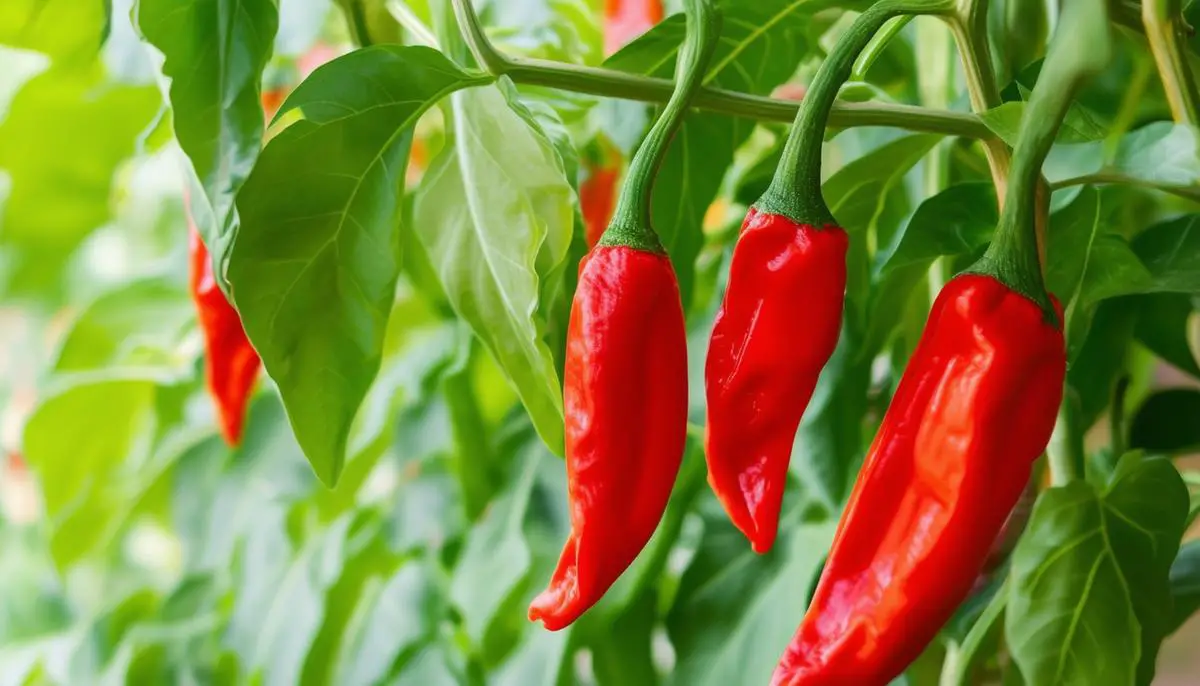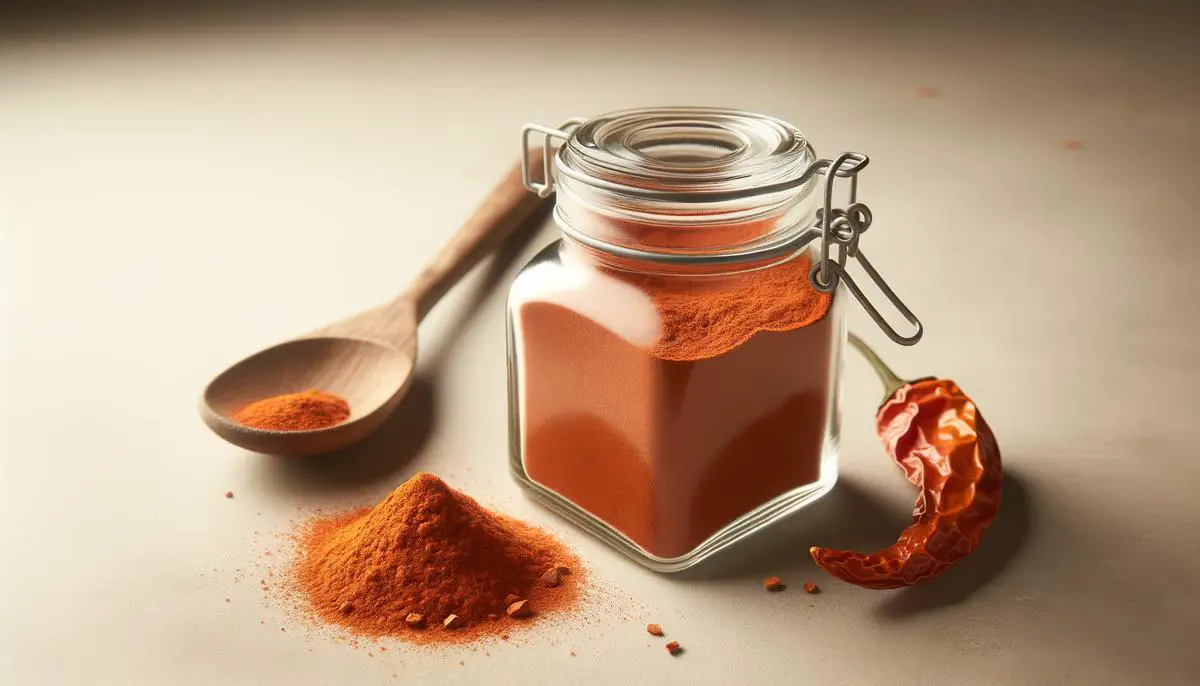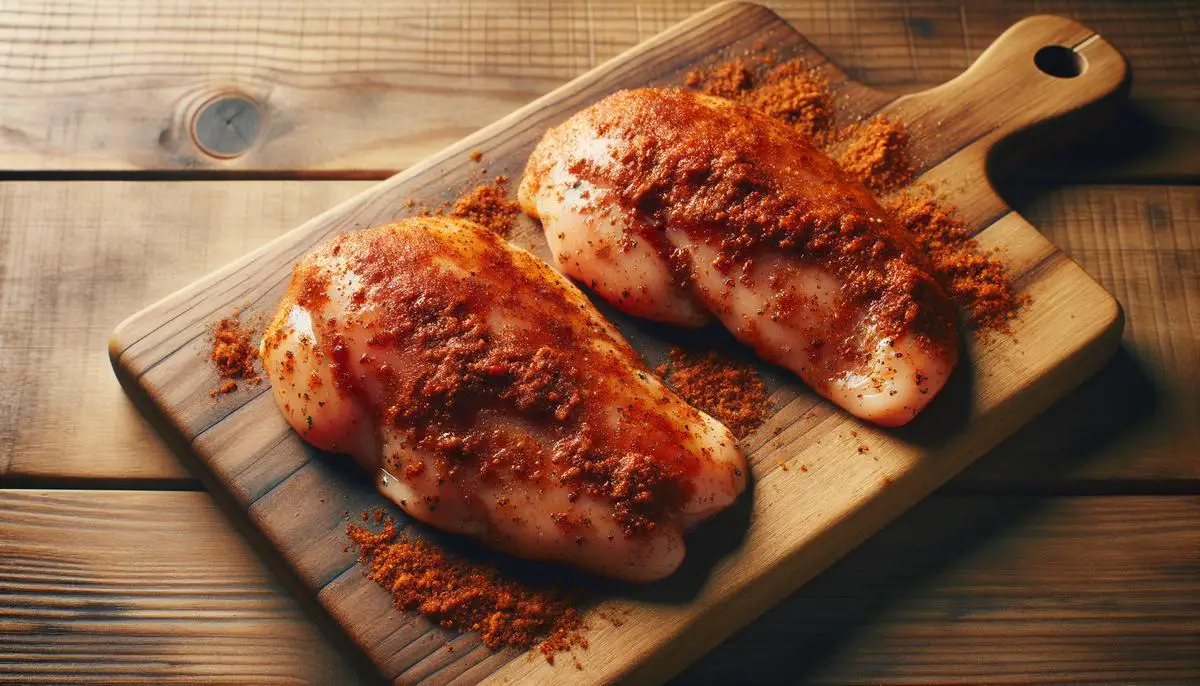
Unpacking Chipotle's Smoky Essence
Chipotle chili powder, with its distinctive deep orange color, is produced from carefully smoke-dried, ripened jalapeños. Traditional Mesoamerican methods rely on a subtle low-heat smoking process, which lends this vibrant orange hue and depletes the peppers' moisture without cooking the flesh, intensifying both aroma and taste.
This spice is deeply connected to Tex-Mex and Southwestern cuisine, not just for its flavor but also as a cultural touchstone that hints at historical cooking practices. In dishes like tacos and chili, chipotle infuses meals with a complexity that nods to centuries of spice and smoking techniques.
Chipotle chili powder's versatility transcends conventional boundaries—sprinkled over pizza or whisked into a chocolate brownie mix—it draws a deep earthiness that complements both savory and sweet encounters. Employed judiciously, the spice coats proteins or transforms a humdrum dip into a conversation piece with its rich, smoky undertones.
Integral to this powder's appeal is the processing of its base ingredient—red, over-ripened jalapeños, which after being smoked, deprived of their stems and seeds, are crushed into a fine, vibrant powder. This staple maintains its pungency and color without additives, preserving its purity and heartiness in every sprinkle.
Chipotle chili powder encapsulates a remarkable interplay of cultivation and culinary craft—a testament to its enduring status in the vast catalog of spices traversed globally.
Health Benefits of Chipotle Chili
Chipotle chili powder, produced from smoke-dried jalapeños, is rich in several nutrients, such as capsaicin, vitamins A and C, iron, and dietary fiber. These ingredients make chipotle a delightful and beneficial addition to meals.
Capsaicin, the component that gives chipotle its heat, is known to boost metabolism, aiding in burning calories more efficiently—a boon for those focusing on weight management. Its effect on fat oxidation suggests benefits for long-term body weight regulation.
Chipotle's high vitamin C content bolsters the immune system. As an antioxidant, Vitamin C protects against free radicals and supports overall health, which is crucial during changing seasons or times of stress.
Vitamin A enhances this spice's profile further. This vitamin is vital for maintaining healthy vision, skin health, and also supports the immune system. Like Vitamin C, it acts as an antioxidant, helping reduce inflammation and playing a role in disease prevention.
Iron found in chipotle chili powder is essential for producing hemoglobin, a component of blood cells that carries oxygen throughout the body. Adequate iron intake prevents anemia and supports metabolic energy.
The dietary fiber in chipotle aids digestion by promoting regular bowel movements, helping prevent constipation and maintain a healthy digestive tract. Fiber also plays a role in controlling blood sugar levels, which can help manage diabetes.
While the health benefits of incorporating chipotle chili powder into one's diet are clear, moderation is key, particularly for those sensitive to spices. The heat from capsaicin can cause discomfort such as acid reflux or irritation in the gastrointestinal tract for some people. A conservative approach to the quantity of chipotle used is advised to enjoy its benefits while minimizing potential adverse reactions.
By integrating chipotle chili powder into your diet, you provide your meals with an exhilarating flavor and equip your body with nutritional tools to support metabolic functions, bolster the immune system, and promote overall vitality. Adjust the spice level to your tolerance and dietary needs to make the most of this versatile and vibrant spice.

Culinary Uses and Applications
Chipotle powder, excellent in providing a distinct, smoky flavor, is not limited to traditional Mexican or Southwestern dishes; its culinary uses span a broad spectrum of recipes. As chefs and home cooks alike seek to enhance their creations with unique flavors, chipotle's profile can be seamlessly incorporated into various dishes across different cuisines.
This smoky powder complements the flavors in several fusion dishes. Adding a teaspoon to Asian-inspired stir-fries introduces a subtle heat and smokiness that contrasts the typically sweet and tangy flavors. Blending it into Indian curries adds depth and complements the natural richness of these dishes.
In marinades, chipotle powder can be combined with olive oil, garlic, and citric juices such as lime or lemon to create a marinade for chicken, beef, or seafood. The smoky heat of chipotle elevates the primary flavors while infusing the meat with a distinct character that holds up well, whether grilled, roasted, or sautéed.
Chipotle's adaptability shines in dry rubs. Mix it with brown sugar for caramelized undertones, paprika for additional color, and a dash of sea salt to draw out moisture from meats, extending a succulent texture upon cooking. This mixture can be liberally rubbed on pork ribs or brisket before slow cooking to craft a consummate crust.
Adventurous bakers leverage the smoky heat of chipotle chili powder by integrating it into chocolate-based desserts like brownies or chocolate chip cookies, delivering an unexpected but delightful spicy kick that melds with the sweetness of the chocolate. Add a half-teaspoon to your favorite brownie mix for enhanced complexity.
For those who follow vegan diets, chipotle provides a remarkable flavor enhancer for plant-based recipes. Sprinkle it onto roasted vegetables, including sweet potatoes or cauliflower, to support their natural sugars with a warm, smoky note. Blend it into vegan soups; a bit of chipotle in a pumpkin or squash soup can transform its flavor profile, making it alluring and vibrant.
The versatile nature of chipotle chili powder encourages creativity in various cooking methods, whether it's sprinkled, blended, or rubbed. From meats to sweets and everything in between, chipotle integrates delicately, offering a special touch that elevates every dish. Embrace the warmth and depth it brings to your culinary repertoire, experimenting freely to find that perfect balance of heat and smoke in your recipes.
DIY Chipotle Powder and Storage Tips
Making your own chipotle powder at home is straightforward and allows you to control the potency and flavor profile of this cherished spice. Begin with dried chipotle peppers, which can be purchased at grocery stores, or dry fresh jalapeños yourself if you prefer a fully DIY approach.
To prepare homemade chipotle powder you'll need:
- Dried chipotle peppers
- A spice grinder or a high-power blender
- A fine mesh sieve (optional, for a finer powder)
- Airtight containers for storage
Steps:
- Ensure the chipotle peppers are completely dry. If you've dried fresh jalapeños at home, ensure they are crisp and brittle, indicating all moisture has been removed.
- Remove stems and seeds if you prefer a less spicy powder. This step is optional and based on your heat preference.
- Place the dried peppers into the spice grinder or blender. Pulse in short bursts until the peppers turn into a fine powder. For a very fine powder, pass the ground spices through a fine mesh sieve.
- Transfer the chipotle powder into an airtight container to preserve freshness.
The key to maintaining the robust flavor and pungency of your homemade chipotle powder lies in proper storage. Here are a few tips:
- Store the powder in airtight containers to protect it from moisture and air, which can diminish its flavor and potency over time.
- Keep the container in a cool, dark area such as a pantry or a cupboard away from direct sunlight and heat sources. Exposure to light and heat can cause the powder to degrade more quickly.
- Label the container with the date of production so you can keep track of freshness.
By following these storage tips, your homemade chipotle powder can retain its vibrant color and fiery taste for up to two years, making it a reliable and exciting addition to your culinary toolkit.

Classic Recipe: Smoky Chipotle Rub
Ingredients:
- 3 tablespoons chipotle powder
- 2 tablespoons garlic powder
- 1 tablespoon onion powder
- 2 teaspoons salt
- 1 teaspoon black pepper
- 1 teaspoon dried oregano (optional)
- 1 teaspoon smoked paprika (optional)
Instructions:
- In a small bowl, combine the chipotle powder, garlic powder, onion powder, salt, black pepper, dried oregano, and smoked paprika. Mix thoroughly to ensure all ingredients are well incorporated.
- Transfer the mixture to an airtight container. Store in a cool, dry place to maintain freshness and flavor.
- Use this smoky chipotle rub for grilling or roasting chicken, beef, or vegetables. Generously apply the rub to the surface of your chosen protein or vegetables, ensuring even coverage.
- For grilling, allow the rub to sit on the food for at least 30 minutes before cooking to enhance the flavors. For roasting, you can proceed to cook immediately or let marinate to deepen the taste.
- Cook your food as desired, enjoying the smoky, spicy flavors imparted by your homemade rub.
Nutritional information per 1 tablespoon serving:
Calories: 15
Total Fat: 0.3g
Saturated Fat: 0.1g
Cholesterol: 0mg
Sodium: 590mg
Total Carbohydrate: 3g
Dietary Fiber: 1g
Total Sugars: 0.1g
Protein: 0.6g
Vitamin A: 5% DV
Vitamin C: 1% DV
Calcium: 1% DV
Iron: 4% DV

- Hwang JK, Kim CT, Choi YK. Capsaicin increases fat oxidation rate and fatty acid oxidation enzyme expression in diet-induced obese mice. J Med Food. 2009;12(1):193-198.
- Jandacek RJ. Linoleic acid: a nutritional quandary. Healthcare (Basel). 2017;5(2):25.
- Carr AC, Maggini S. Vitamin C and immune function. Nutrients. 2017;9(11):1211.
- Debnath S, Begum N, Das PK. Role of vitamin A in immune system and its effects during therapy. J Pharmacol Clin Res. 2018;5(3):555663.
- Abbaspour N, Hurrell R, Kelishadi R. Review on iron and its importance for human health. J Res Med Sci. 2014;19(2):164-174.
- Lattimer JM, Haub MD. Effects of dietary fiber and its components on metabolic health. Nutrients. 2010;2(12):1266-1289.



